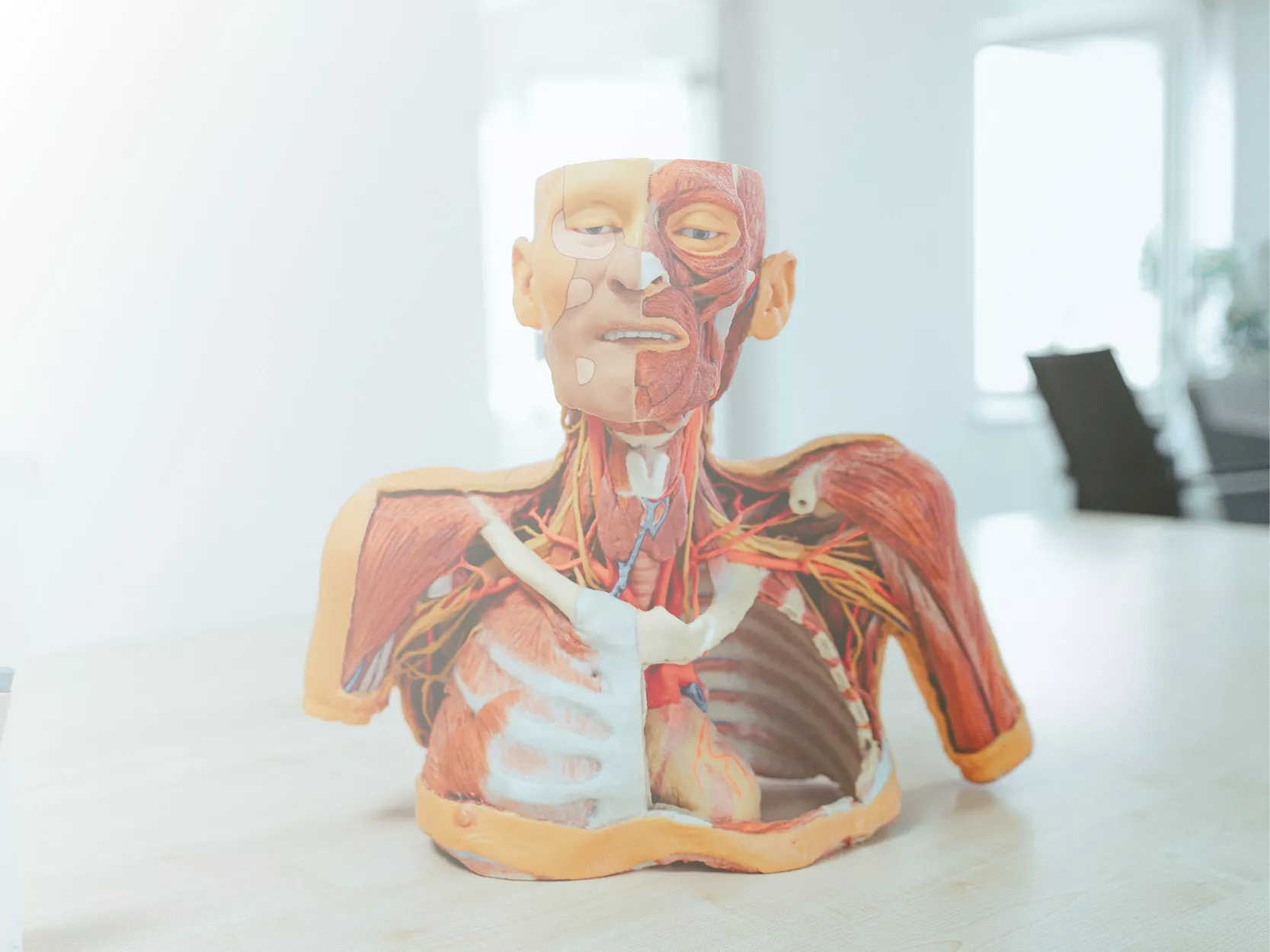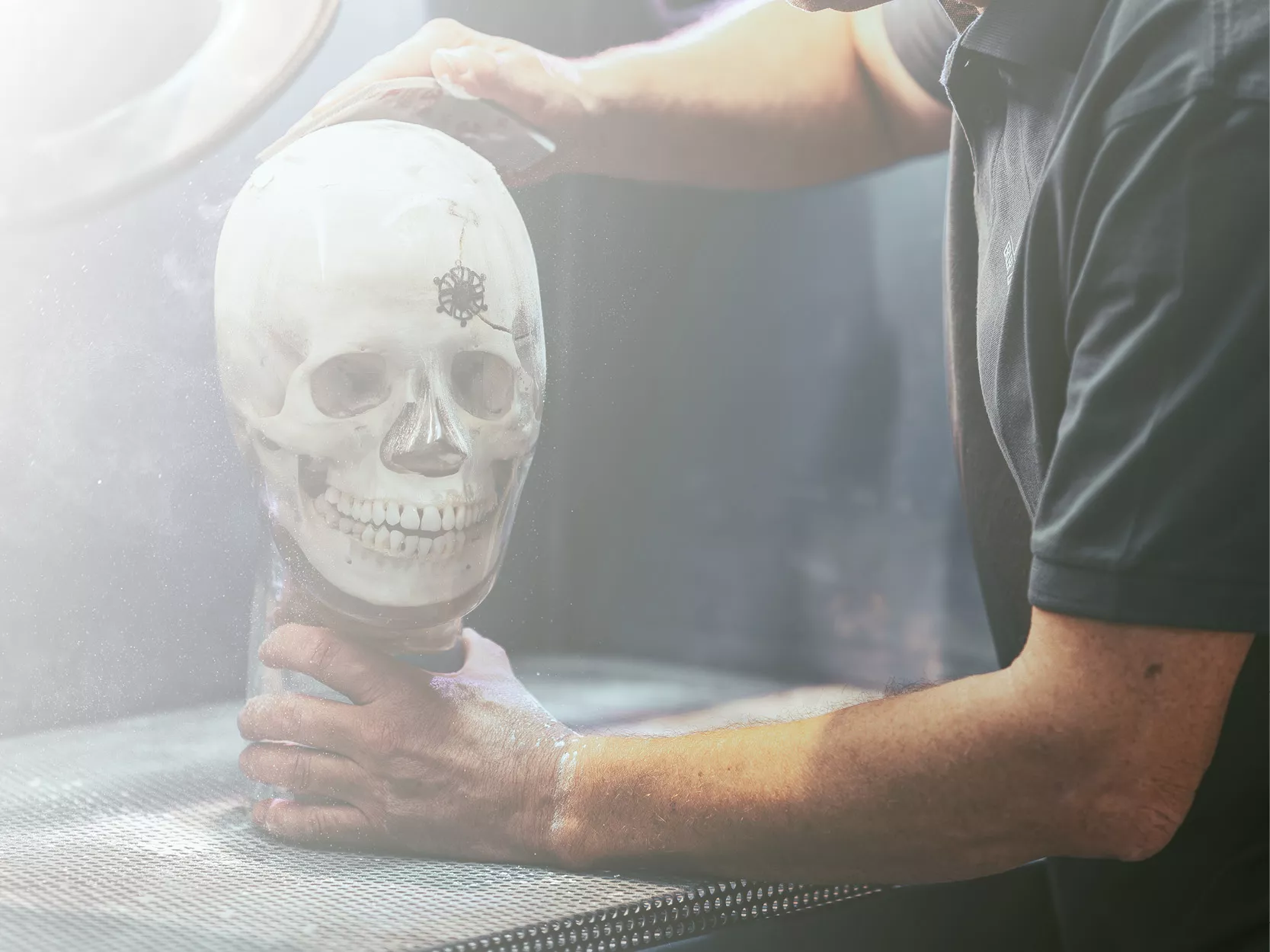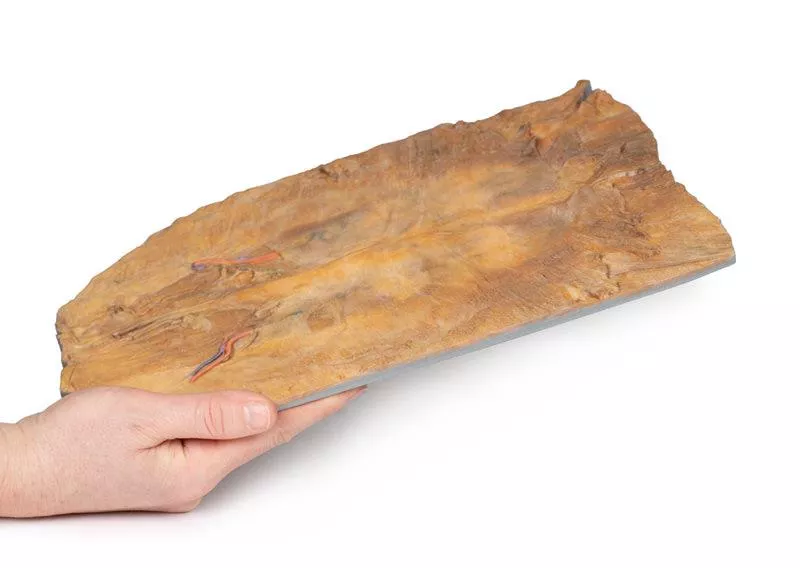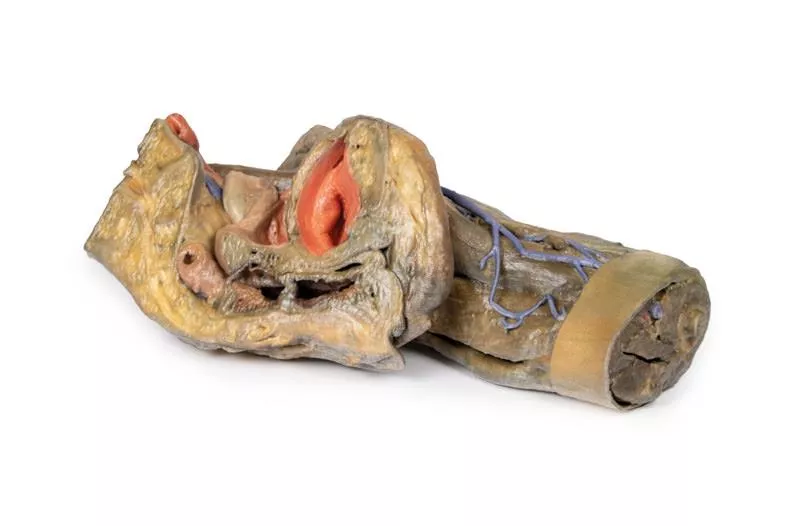Produktinformationen "Internal abdominal wall"
Dieses detaillierte 3D-Modell zeigt die innere Oberfläche der vorderen Bauchwand – ein Bereich, der bei Präparationen häufig entfernt oder beschädigt wird. Es ergänzt unser MP1130-Bauchpräparat, bei dem die vordere Wand entfernt wurde, und bietet einen klaren Blick auf wichtige Muskel- und Bindegewebsstrukturen.
Hauptmerkmale:
Muskelfasern und Aponeurose:
Die horizontal ausgerichteten Muskelfasern des Musculus transversus abdominis laufen zu ihrer Aponeurose (Sehnenblatt) zusammen, die insbesondere entlang der oberen Ränder des Präparats sichtbar ist.
Arcuate Line:
Diese Landmarke befindet sich im unteren Drittel des Modells und markiert die Stelle, an der sich die Aponeurose relativ zum Musculus rectus abdominis verschiebt.
- Oberhalb der Arcuate Line: Die Aponeurosefasern teilen sich gleichmäßig um den Musculus rectus abdominis.
- Unterhalb der bogenförmigen Linie: Alle Aponeurosefasern verlaufen anterior zum Musculus rectus abdominis, was eine Veränderung der Bauchwandstruktur widerspiegelt.
Gefäßstrukturen:
Arterien und Venen der unteren Epigastriumregion:
Diese Gefäße entspringen aus den Arterien und Venen der A. iliaca externa und verlaufen superior durch die vordere Bauchwand.
Hesselbach-Dreieck:
Auf der rechten Seite des Modells definiert die Ausrichtung der unteren epigastrischen Arterie relativ zum Musculus rectus abdominis den Scheitelpunkt des Leisten- (Hesselbach-) Dreiecks – einer kritischen anatomischen Region, die häufig mit direkten Leistenbrüchen in Verbindung gebracht wird. (Hinweis: Das Leistenband, das die Basis dieses Dreiecks bildet, ist in diesem Präparat nicht vorhanden.)
Embryologischer Rest:
Medianes Bauchband:
Diese Falte des parietalen Peritoneums befindet sich in der Mittellinie zwischen den beiden geraden Bauchmuskeln und bedeckt den Urachus, einen fibrösen Rest aus der embryonalen Entwicklung, der sich von der Blase bis zum Nabel erstreckt.
Hauptmerkmale:
Muskelfasern und Aponeurose:
Die horizontal ausgerichteten Muskelfasern des Musculus transversus abdominis laufen zu ihrer Aponeurose (Sehnenblatt) zusammen, die insbesondere entlang der oberen Ränder des Präparats sichtbar ist.
Arcuate Line:
Diese Landmarke befindet sich im unteren Drittel des Modells und markiert die Stelle, an der sich die Aponeurose relativ zum Musculus rectus abdominis verschiebt.
- Oberhalb der Arcuate Line: Die Aponeurosefasern teilen sich gleichmäßig um den Musculus rectus abdominis.
- Unterhalb der bogenförmigen Linie: Alle Aponeurosefasern verlaufen anterior zum Musculus rectus abdominis, was eine Veränderung der Bauchwandstruktur widerspiegelt.
Gefäßstrukturen:
Arterien und Venen der unteren Epigastriumregion:
Diese Gefäße entspringen aus den Arterien und Venen der A. iliaca externa und verlaufen superior durch die vordere Bauchwand.
Hesselbach-Dreieck:
Auf der rechten Seite des Modells definiert die Ausrichtung der unteren epigastrischen Arterie relativ zum Musculus rectus abdominis den Scheitelpunkt des Leisten- (Hesselbach-) Dreiecks – einer kritischen anatomischen Region, die häufig mit direkten Leistenbrüchen in Verbindung gebracht wird. (Hinweis: Das Leistenband, das die Basis dieses Dreiecks bildet, ist in diesem Präparat nicht vorhanden.)
Embryologischer Rest:
Medianes Bauchband:
Diese Falte des parietalen Peritoneums befindet sich in der Mittellinie zwischen den beiden geraden Bauchmuskeln und bedeckt den Urachus, einen fibrösen Rest aus der embryonalen Entwicklung, der sich von der Blase bis zum Nabel erstreckt.
Erler-Zimmer
Erler-Zimmer GmbH & Co.KG
Hauptstrasse 27
77886 Lauf
Germany
info@erler-zimmer.de
Achtung! Medizinisches Ausbildungsmaterial, kein Spielzeug. Nicht geeignet für Personen unter 14 Jahren.
Attention! Medical training material, not a toy. Not suitable for persons under 14 years of age.







































